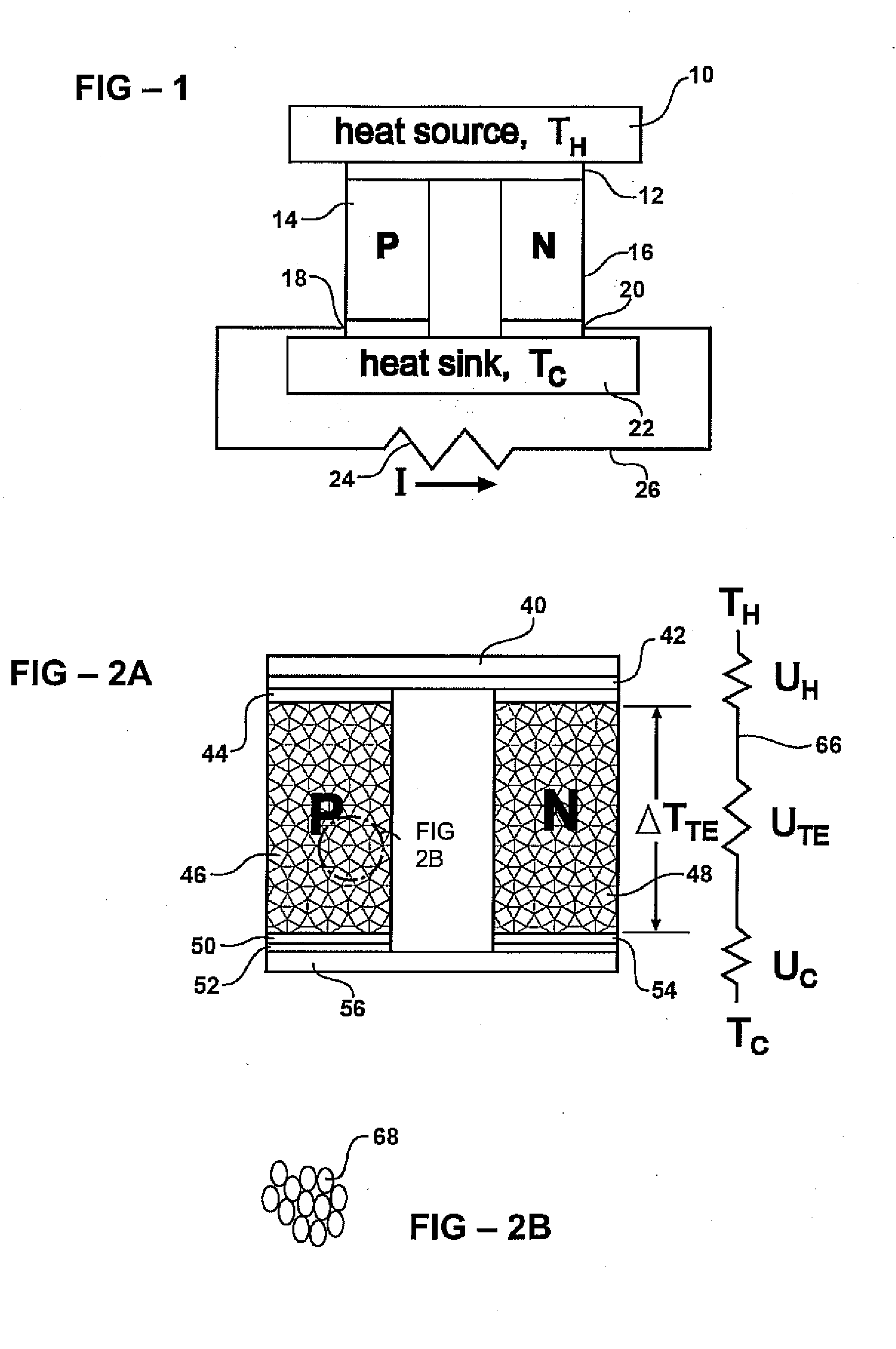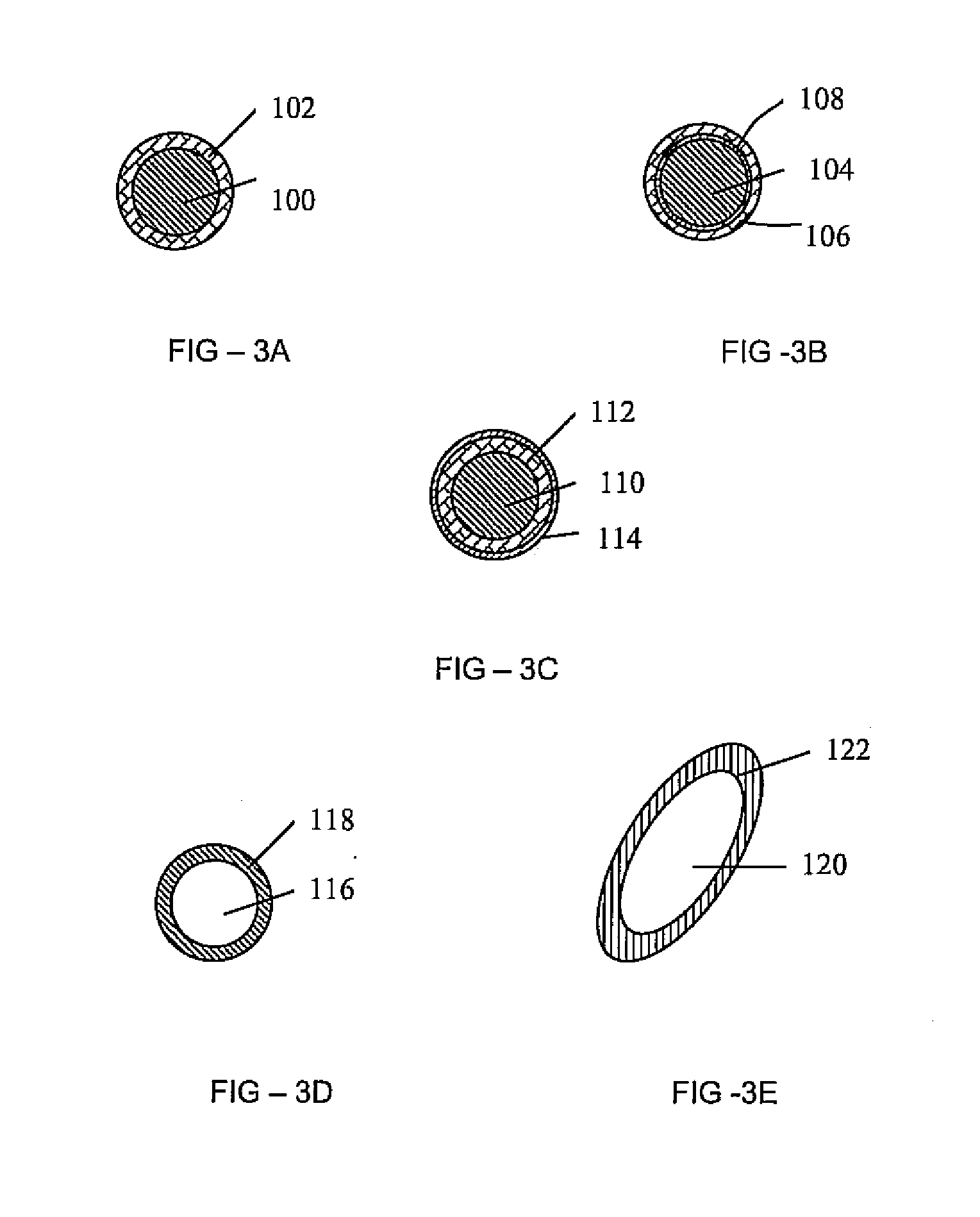Homogeneous thermoelectric nanocomposite using core-shell nanoparticles
a thermoelectric composite material and homogeneous technology, applied in the direction of thermoelectric device junction materials, thermoelectric device manufacturing/treatment, electrical apparatus, etc., can solve the problems of difficult and/or expensive manufacture of nanostructured materials, difficult to obtain uniform properties of composite materials, etc., to achieve uniform and improve thermoelectric
- Summary
- Abstract
- Description
- Claims
- Application Information
AI Technical Summary
Benefits of technology
Problems solved by technology
Method used
Image
Examples
example 1
Preparation of Core-Shell Nanoparticles Using MPS-functionalized Silica Cores
[0049]Preparation of Silica Cores: Silica spheres were prepared by reacting TEOS in a mixture of ethanol, water and ammonia according to the Stober method. Silica spheres with different sizes were achieved by adjusting the ratios of the reactants, reaction time and temperature. Typically, for the synthesis of ˜200 nm silica particles, 2 mL of 30% ammonia, 3 mL of distilled 50 mL ethanol, and 1.5 mL of TEOS was mixed and stirred for 12 h at room temperature. The particles were collected by centrifugation and redispersed in ethanol or distilled water at least three times to remove any excess reactants. The silica particles solutions were then allowed to react with MPS or APS overnight, centrifuged and redispersed in ethanol at least five times to remove the unreacted MPS. Finally, the functionalized silica spheres were redispersed in distilled water for further use. The resulting particles were stable for at ...
example 2
Poly(acrylic Acid) Functionalized Silica Particles
[0057]Another approach to synthesize core-shell thermoelectric particles was developed using poly(acrylic acid) functionalized silica particles as cores. This was achieved by covalently bonding poly(acrylic acid) (PAA) with the amine-functionalized silica particles using 4-(4,6-dimethoxy-1,3,5-triazin-2-yl)-4-methylmorpholinium chloride (DMT-MM). Uniform, high-coverage thermoelectric material shells on silica cores were obtained using these carboxylic terminated silica spheres as core materials. Annealing the particles at moderate temperatures under nitrogen or hydrogen resulted in the formation of core-shell SiO2@Bi2Te3 particles with a well-crystallized Bi2Te3 shell.
[0058]Tetraethyl orthosilicate (TEOS, 98%), 3-aminopropyltrimethoxysilane (APS, 95%), poly (acrylic acid) (PAA), polyvinylpyrrolidone (10,000, PVP), ammonia (28-30%), ethanol (200 proof), bismuth nitrite pentahydrate (98%), sodium borohydride (98%), tellurium (99.8%) we...
example 3
Particles With Carbon or Polysugar Cores and PbTe Shells
[0067]The synthesis of carbon or polysugar core PbTe shell particles was achieved by adsorbing Pb ions onto carbon or polysugar spheres prepared by hydrothermally reacting glucose in water, followed by a reducing reaction using NaHTe.
[0068]FIGS. 10 is a schematic illustration of the process for preparing polysugar core / PbTe shell particles. Glucose turned into polysugar spheres (represented at 130) after hydrothermal treatment. The surface of the polysugar spheres was exposed to metal ions (in this example, Pb2+) under basic condition, forming a layer of surface complexed ions (132) on the surface of the polysugar spheres. Exposure to sodium hydrogen telluride formed a layer of lead telluride on the surface of the polysugar spheres, forming the polysugar core / PbTe shell particles. This process can be extended to the preparation of other metal chalcogenides, for example by complexing other metal ions on the surface of the sphere...
PUM
 Login to View More
Login to View More Abstract
Description
Claims
Application Information
 Login to View More
Login to View More - R&D
- Intellectual Property
- Life Sciences
- Materials
- Tech Scout
- Unparalleled Data Quality
- Higher Quality Content
- 60% Fewer Hallucinations
Browse by: Latest US Patents, China's latest patents, Technical Efficacy Thesaurus, Application Domain, Technology Topic, Popular Technical Reports.
© 2025 PatSnap. All rights reserved.Legal|Privacy policy|Modern Slavery Act Transparency Statement|Sitemap|About US| Contact US: help@patsnap.com



